10 Things You Need To Know About The 2020 Triumph Tiger 900
Working toward that happy medium
Triumph sprang a 3500-word manifesto re: its new Tiger 900 on us just before the press introduction of the new bike last Tuesday in St. Louis, which we ran in its entirety. Now that we’ve had a few days to digest all the newness of the thing (five things really: Tiger 900, Tiger 900 GT and GT Pro, Tiger 900 Rally and Rally Pro) here are our main take-aways.
10. Longest-running ADV bike in the world
Since 1936. Really, they were all adventure bikes in the beginning, because most roads weren’t paved yet. But if Triumph wants to claim the 1936 Tiger as the first ADV bike, who are we to quibble? When Ted Simon rode round the world and wrote Jupiter’s Travels, he did it on a Tiger. And when this humble journalist first learned the dissonance of large motorcycles and sand, it was on a ’93 Tiger 900 – one year before the first oilhead BMW GS1100. If provenance is important to you, there’s no reason to diss the Tiger.
9. Weight reduction
It’s not so easy to quantify since Triumph insists on speccing dry weights for its bikes, but if the 20 pounds less they claim for the new Rally Pro versus the outgoing XCc is to be believed, that’s a significant reduction. The last time we had the triple on the official MO scales for our 2016 Wire-Wheel Adventure Shootout, the XCx weighed 547 pounds with 5 gallons of fuel and optional saddlebags. If the new Tiger’s down below 520 or so, it will seriously undercut competitors like the 545-lb Honda Africa Twin – and, like the Honda, will be way easier to deal with in sticky situations.
8. No skimping
You’ll be needing to step up to the $14,300 GT or $15k Rally to get all the good stuff, but once you’ve made the leap, there’s no skimping on the old family recipe: braided steel brake lines feeding the latest in Brembo Stylema calipers, tubeless tires on spoked wheels for the Rally, new 7-inch TFT display controlling new IMU-assisted ABS and TC, heated grips and seats, cruise control, quickshifter… it’s nice to see all the luxury items now available on the right-sized ADV bikes as well as the flagships.
7. Accessorize til the cows come home
Not to offend the aftermarket, but it’s nice when the factory specs accessories you know are going to fit and perform as advertised. There’s already an “Expedition” kit for girding the Tiger’s loins for more off-road use, and a “Trekker” one for more pavement-oriented missions. Or, pick out just the items you want from a selection of luggage options (by Givi); radiator, fork and engine guards; fog lights and windshield options, up/down quickshifter, heated seats… the list, as they say, goes on.
6. Know thyself, and pick the Tiger that fits
They build five of them, so why not take realistic stock of the kind of riding you’ll be doing most of the time. For me anyway, the new nomenclature is easier to understand than the old: GT for grand touring on mostly pavement, Rally for, wait, aren’t many rallies on pavement also? Never mind: The main diff is that the GT and GT Pro get 19- and 17-inch tires on cast wheels; the Rally and Rally Pro get 21- and 17-inch beautiful, and strong, wire-spoke wheels running tubeless tires, more suitable for off-road encounters.
You’ll now find Marzocchi suspension on base and GT models, with 180mm and 170mm travel front and rear (7.1 and 6.7 in.), and longer-travel Showa forks and shocks on the Rallys – 240/230mm travel F/R (9.4/ 9.0 in.). The GT Pro features a premium electronic rear shock, which is adjustable for spring preload, and damping adjustment via whichever ride mode is selected. Muy convenient.
Base and GT models have correspondingly lower seats, 1.6 in. lower than the Rallys, and adjustable from 31.9 to 32.7 inches. And don’t forget the special Low Ride Height GT, whose seat is two inches lower via dedicated suspension set-up and a lower seat; it’s adjustable between 29.9 and 30.7 inches.
Anyway, the real beauty of all ADV bikes is that the GTs are still highly capable off-road, and the Rallys are still highly capable on it, says Triumph. Roam if you want to. All around the world.
5. Mass optimization = Better handling
Adapting dirt bike style split radiators allowed the front wheel to be tucked in tighter, moving the engine and center of gravity 40mm forward and 20mm lower than before, with no loss in ground clearance thanks to a new sump. While they were at it, the bike got narrower and therefore easier to step over. Factor in the light-pull slip-assist clutch, rethought ergonomics, lighter-weight steel trellis frame (now with bolt-on aluminum subframe) – and Triumph (and paid spokesperson/stunt rider/racer Ernie Vigil) tell us the new bike has much better “balance” than the previous version when picking through technical terrain, as well as being much sportier on the road. (Pictured bike is wearing accessory radiator guards, crash bars and fog lights.)
4. Latest anti-prang technology
Flip-phone users and/or expert off-road riders may opt for the base 900’s regular ABS and Road and Rain modes and be content, but most will want to spring for the Rally, Rally Pro, GT, or GT Pro models, all of which provide the latest in IMU-controlled lean-sensitive rider aids and up to six(!) ride modes – including Off Road Pro (exclusively on the Rally Pro). Ironically, it turns ABS and TC off, while plugging in the maximum-aggro Off Road throttle map.
Off Road mode, found on all but the base Tiger, also includes a new anti-stall feature that automatically bumps up the revs to preclude those embarrassing engine-stall tump-overs.
3. Modern world
Wait, isn’t connectivity the antithesis of getting away from it all and getting lost in the outback? You can always choose to decline incoming calls and ignore the turn-by-turn directions (via your cell phone tucked snugly under the seat). Still,it could be someone you want to talk to popping up on the screen, and sometimes nav really does save your bacon. As does being able to switch on your GoPro at a moment’s notice. It’s all large enough on the new 7-inch TFT for even old eyes to see, and you control all of it with the joystick at your left thumb. On the Rally Pro, your switchgear’s even backlit so you can operate it after dark.
2. T-plane triple crank for more engine character and tractability
The previous engine used the typical triple 120-degree crank; the new one gets a t-plane crankshaft that fires the #3 cylinder 180 degrees after #1, and #2 270 degrees later.
When compared to bigger twins in our last comparison, T. Roderick wrote: “… testers enjoyed spinning its three-cylinder engine through paved twisties, but were less fond of the bike’s lack of bottom-end grunt when riding in the dirt. It’s easy to see why a twin-cylinder arrangement is the engine configuration of choice among ADV bikes.”
We only got to hear it run briefly, but the new engine does indeed have serious bark, and Ernie Vigil tells us the new layout (and no doubt the extra displacement) really does provide a noticeable bump in torque down low, which is just what the doctor ordered, along with triple revvability on top.
Along with the bump from 800 to 888 cc (via 3.9mm-larger diameter pistons), the new engine gets Nikasil-plated siamesed cylinder liners, new pistons, connecting rods and cams, a new balancer shaft, magnesium covers. It all adds up, says Triumph, to a 5.5-pound reduction in drivetrain weight.
And, we’re also looking at a big bump in torque across the powerband (peaking at 64 lb-ft. at 7250 rpm), and up to 12% more horsepower in the midrange (peaking at 95 hp at 8750 rpm). And, we’re Euro5 compliant, with a claimed mpg figure of 55.4.
1. This Trend is our Friend
Mine, anyway, and all of us who like the idea of adventure riding but not always the reality of 600-plus pound motorcycles in sketchy terrain. For a while there, if you wanted all the top-shelf components and electronic aids, you needed the big-displacement Tiger or BMW GS or Multistrada or KTM. Lately, you can have it all on the “midsize” version. And it wasn’t long ago that 900 cc was a big motorcycle. This new Tiger 900 has plenty of room for two and plenty of steam to haul that many people along the superslab as needed, with as much gear as you can stuff into your choice of luggage options, complete with warm buns, hands, cruise control, etc. – all while minimizing one’s cashetary outlay and carbon footprint. Win, win.
More by John Burns




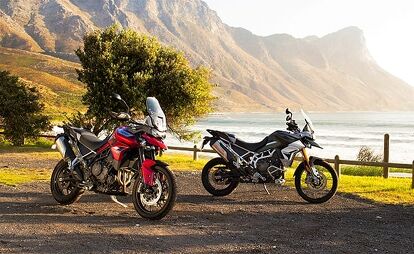












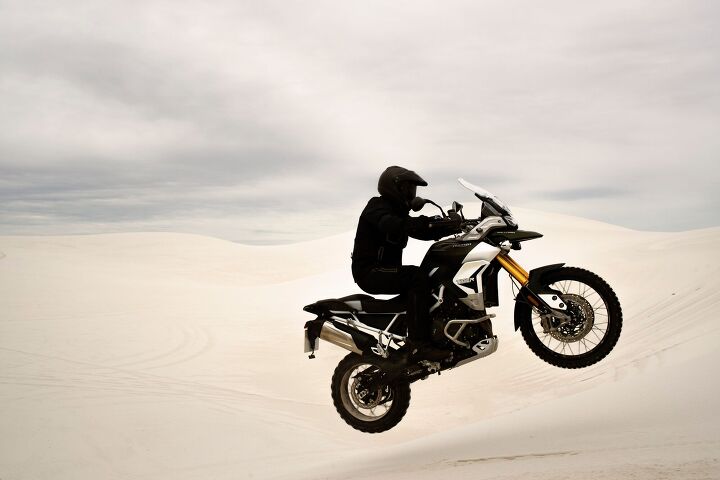

















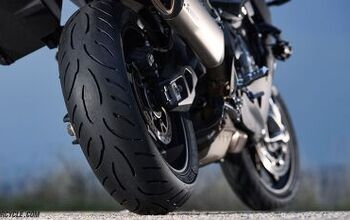





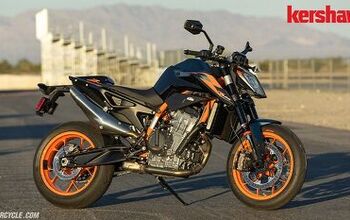



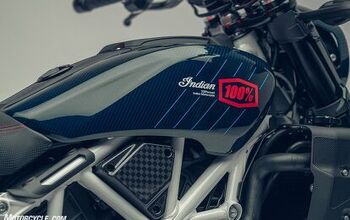


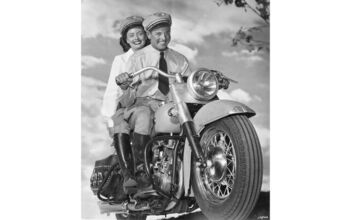

Comments
Join the conversation
As a former owner of a first-generation V-Strom, I have to say that if I was in the market for a new sport-tourer (ADV style), I would be seriously interested in the Tiger 900/GT/GT Pro. They're in a similar vein as the current V-Strom or Tracer 900/GT, but with higher quality suspensions and fit and finish in general.
The new generation V-Strom 1050 would interest me a lot more if Suzuki hadn't decided to put all the good stuff (cruise control, heated grips, 6-axis IMU, braking ABS, hand-adjustable windshield, etc) only on the wire-wheeled "XT" model which, besides the wire wheels (not a fan) has a couple other extras that I have no interest in (engine bars, for one).
This seems like a lot of different versions of one model, but I think it's the smart way to go.
I wouldn't make too much of the little bit smaller my carbon footprint is going to be compared to a 1200 twin. And, right now, my local dealer has a new 2019 KTM 1290 S for 13.9k and a 1290 R for 14.9k!